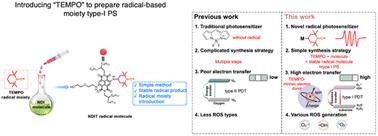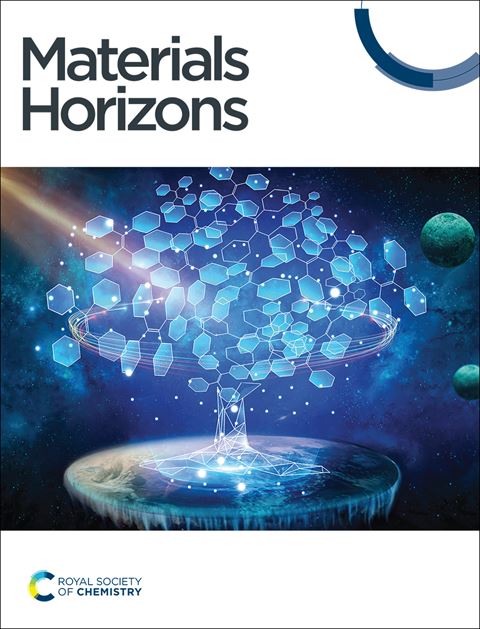利用稳定自由基作为 "电子供体",开发用于高效 I 型光动力疗法的自由基光敏剂。
IF 10.7
2区 材料科学
Q1 CHEMISTRY, MULTIDISCIPLINARY
引用次数: 0
摘要
在 I 型光敏剂中,稳定的有机自由基是克服缺氧的光动力疗法的理想候选分子。然而,复杂的制备过程和较差的稳定性限制了它们的广泛应用。在此,我们通过引入市售的 "TEMPO "分子,简单地合成了一种亚硝基自由基。该自由基在缺氧条件下具有高效的 I 型 ROS 生成能力和明显的光毒性,为探索新型高效 I 型光敏剂开辟了一条新途径。本文章由计算机程序翻译,如有差异,请以英文原文为准。

Using a stable radical as an “electron donor” to develop a radical photosensitizer for efficient type-I photodynamic therapy†
Among type I photosensitizers, stable organic radicals are superior candidate molecules for hypoxia-overcoming photodynamic therapy. However, their wide applications are limited by complicated preparation processes and poor stabilities. Herein, a nitroxide radical was simply synthesized by introducing a commercially available “TEMPO” moiety. The radical exhibits efficient type-I ROS generation and appreciable photo-cytotoxicity under hypoxia, which open up a new avenue for the exploration of a novel and efficient type-I photosensitizer.
求助全文
通过发布文献求助,成功后即可免费获取论文全文。
去求助
来源期刊

Materials Horizons
CHEMISTRY, MULTIDISCIPLINARY-MATERIALS SCIENCE, MULTIDISCIPLINARY
CiteScore
18.90
自引率
2.30%
发文量
306
审稿时长
1.3 months
期刊介绍:
Materials Horizons is a leading journal in materials science that focuses on publishing exceptionally high-quality and innovative research. The journal prioritizes original research that introduces new concepts or ways of thinking, rather than solely reporting technological advancements. However, groundbreaking articles featuring record-breaking material performance may also be published. To be considered for publication, the work must be of significant interest to our community-spanning readership. Starting from 2021, all articles published in Materials Horizons will be indexed in MEDLINE©. The journal publishes various types of articles, including Communications, Reviews, Opinion pieces, Focus articles, and Comments. It serves as a core journal for researchers from academia, government, and industry across all areas of materials research. Materials Horizons is a Transformative Journal and compliant with Plan S. It has an impact factor of 13.3 and is indexed in MEDLINE.
 求助内容:
求助内容: 应助结果提醒方式:
应助结果提醒方式:


